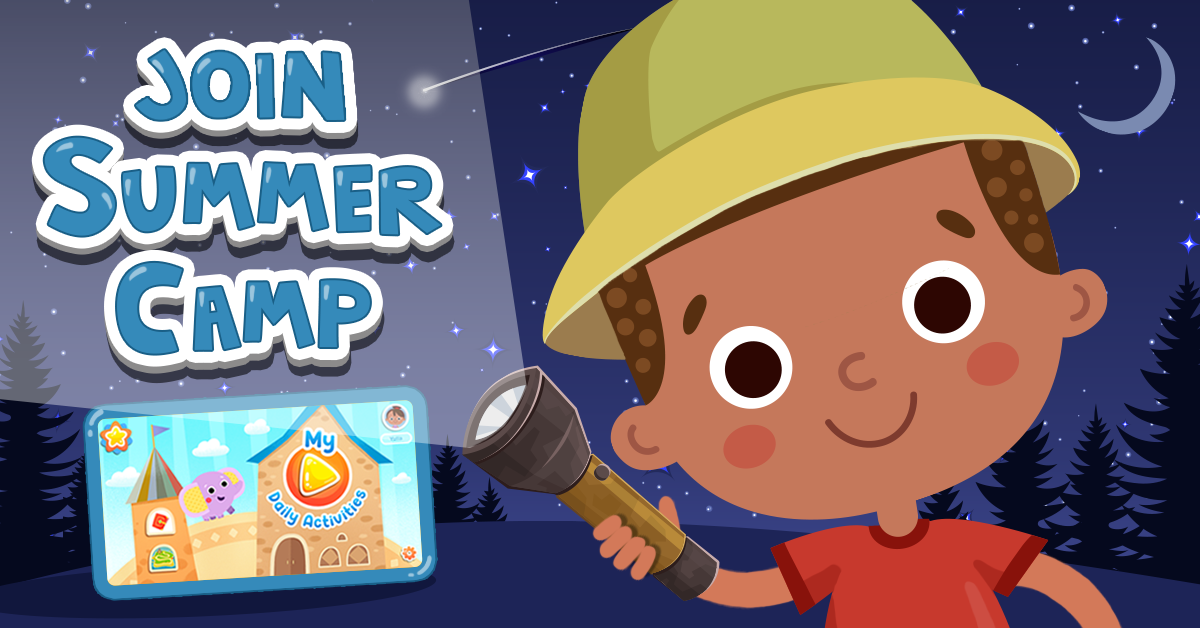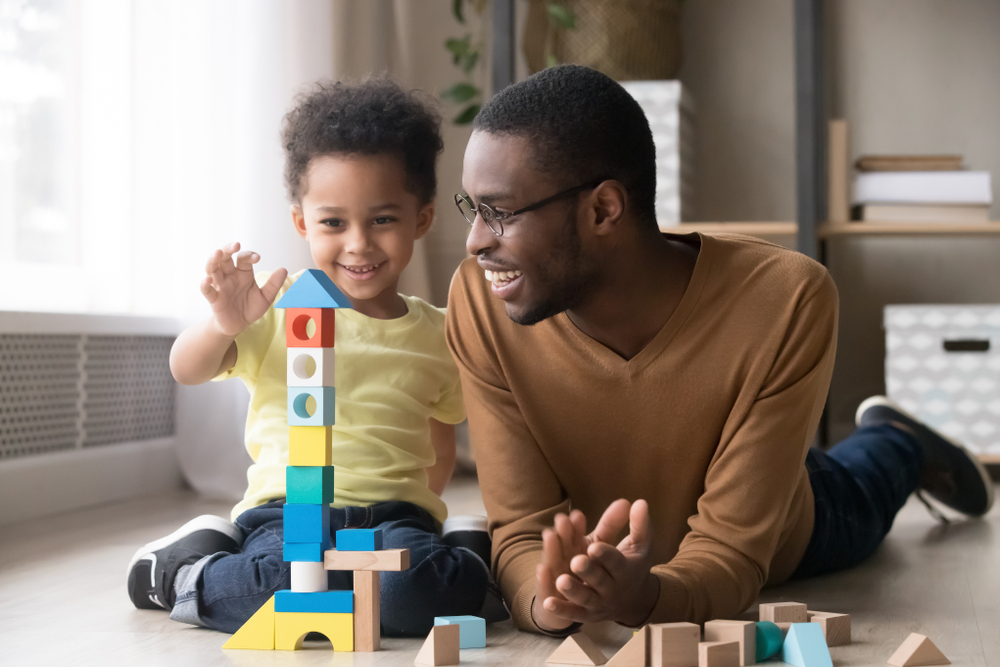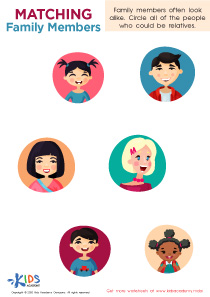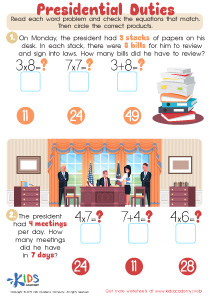Event sequencing History Worksheets for Ages 4-8
3 filtered results
-
From - To
Enhance young learners' understanding of timelines and historical events with our engaging Event Sequencing History Worksheets for ages 4-8! Designed to boost critical thinking and comprehension skills, these worksheets provide fun and interactive activities that guide students in organizing events in chronological order. With vibrant illustrations and age-appropriate content, children will explore significant moments in history while developing their sequencing skills. Perfect for classroom or home learning, these printable resources make history accessible and enjoyable. Foster curiosity about the past and empower young minds to connect stories and events with our thoughtfully crafted worksheets. Dive into learning today!
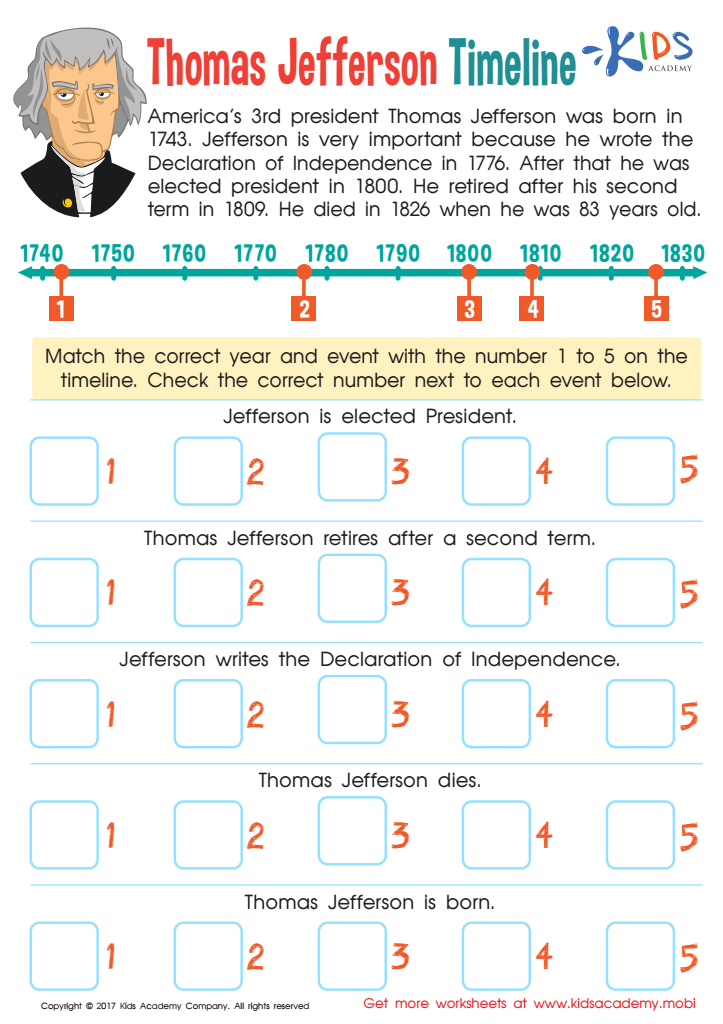

Thomas Jefferson Timeline Worksheet
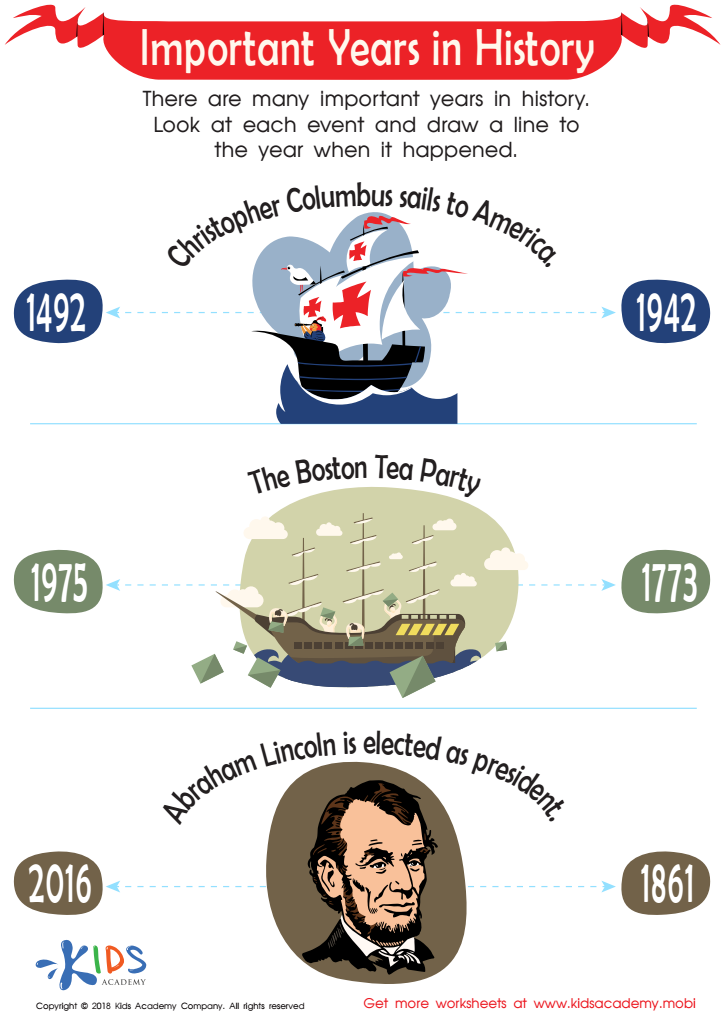

Important Years in History Worksheet
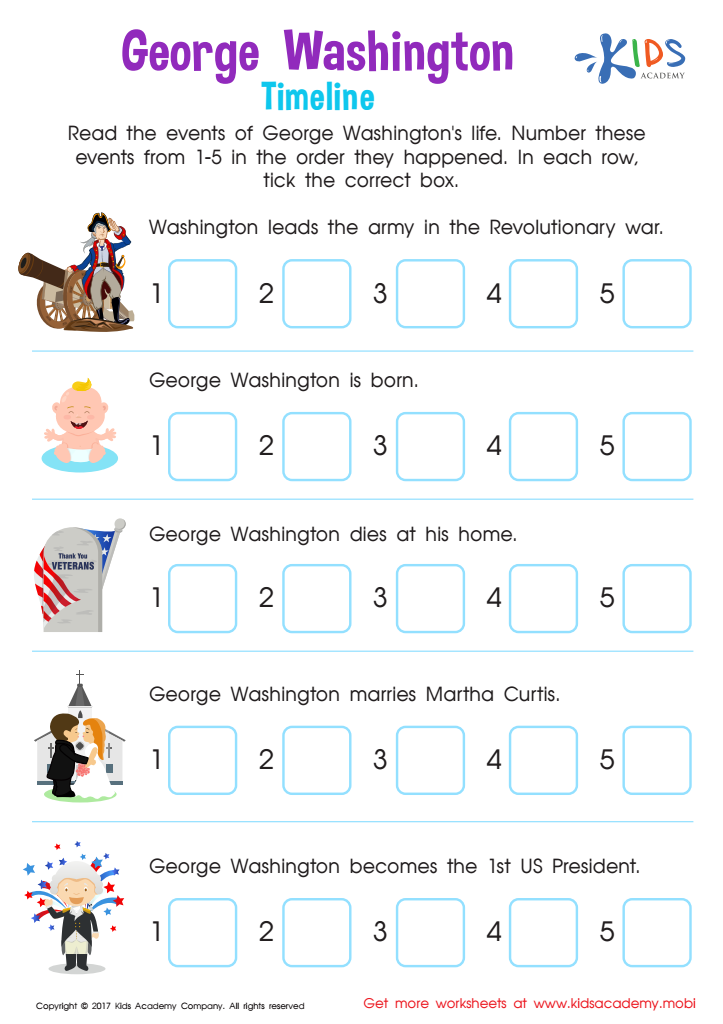

George Washington Timeline Worksheet
Event sequencing is a crucial cognitive skill for children aged 4-8, and both parents and teachers should prioritize its importance. Understanding event sequencing helps children grasp the concept of time and the order in which things happen, which is foundational for their overall cognitive development. It fosters critical thinking, as students learn to organize information logically, leading to improved problem-solving skills.
Additionally, event sequencing is essential for language development. Children learn to articulate their thoughts and experiences by recounting events in the proper order, enhancing their storytelling abilities and vocabulary. This skill also supports reading comprehension; as children learn to understand the structure of narratives, they can better follow along with stories or texts they encounter.
Moreover, event sequencing helps children develop social-emotional skills. By learning to recognize and anticipate the consequences of actions and the sequence of events in their interactions, children become more aware of social cues and relational dynamics, fostering empathy.
Finally, engaging in activities that promote event sequencing—such as storytelling, sequencing games, or discussions about daily routines—can foster a positive and supportive learning environment at home and in the classroom, ultimately contributing to children’s success and well-rounded development.
 Assign to My Students
Assign to My Students





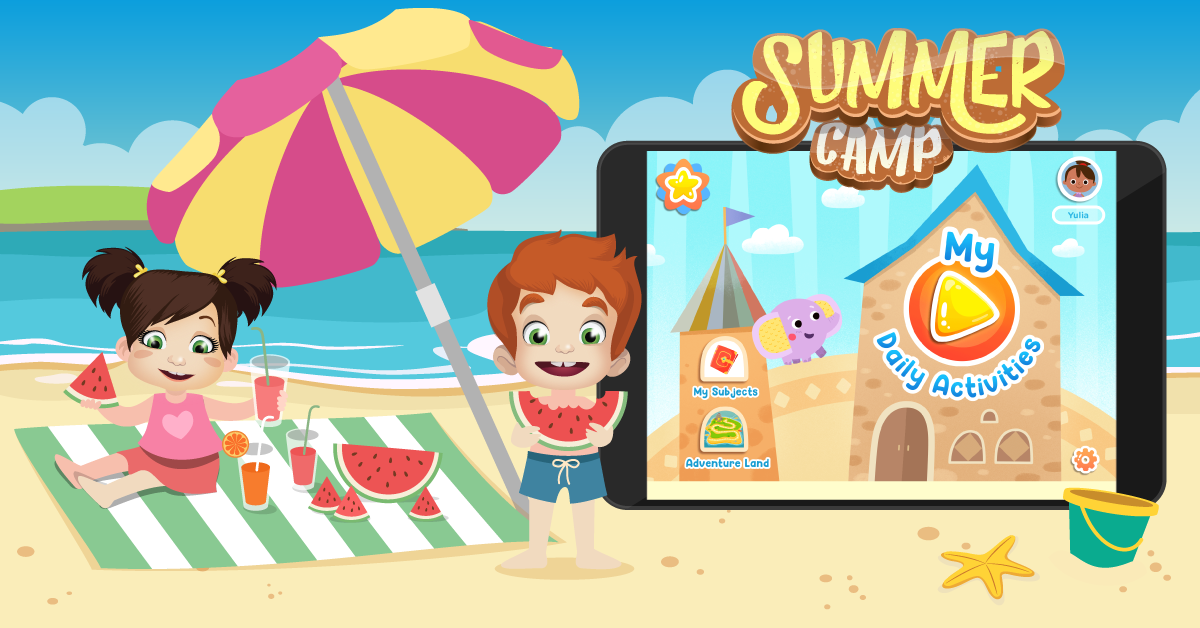
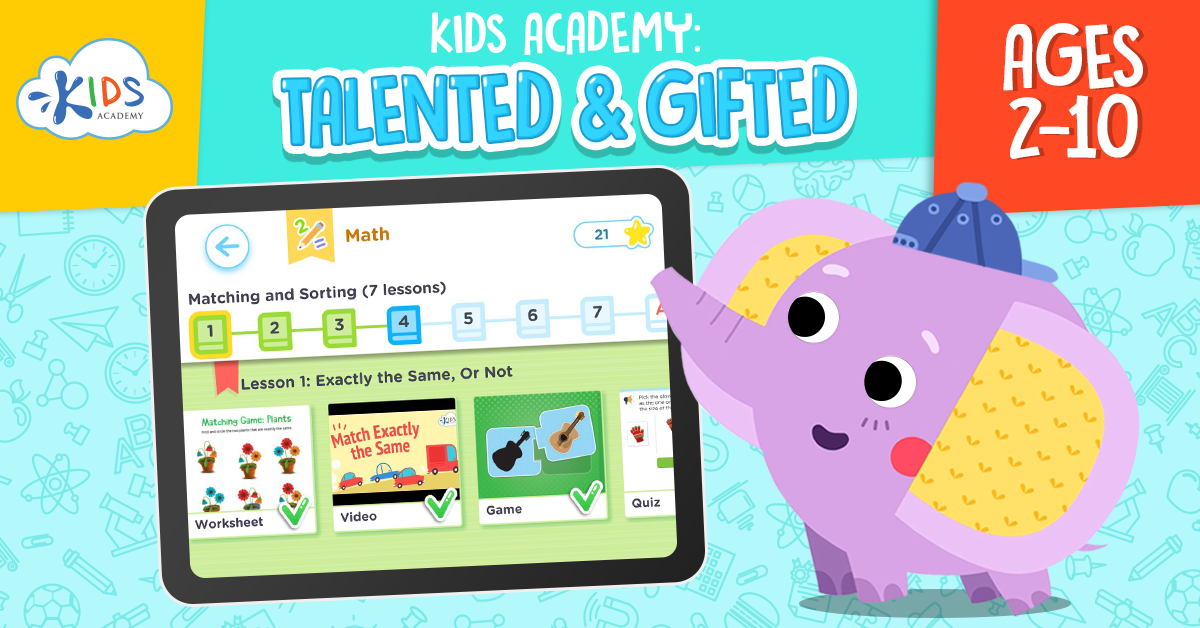
.jpg)
